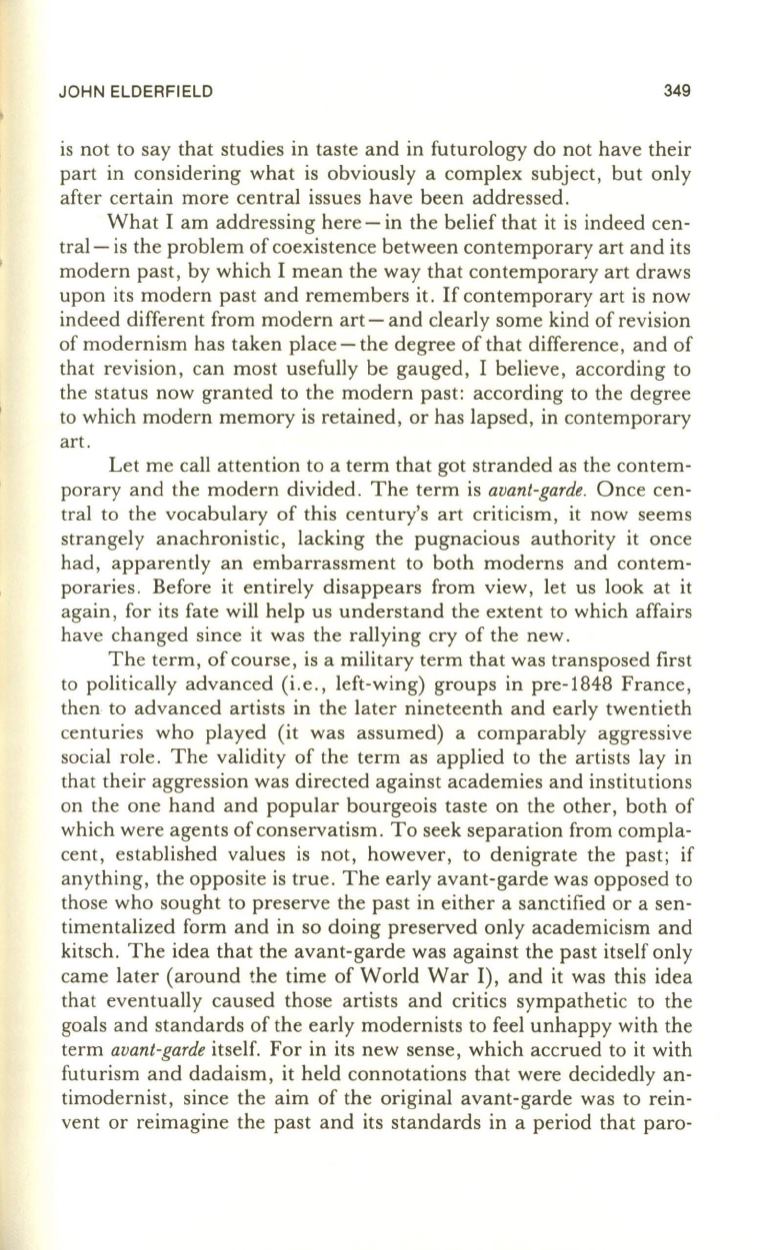
JOHN ELDERFIELD
349
is not to say that studies in taste and in futurology do not have their
part in considering what is obviously a complex subject, but only
after certain more central issues have been addressed.
What I am addressing here - in the belief that it is indeed cen–
tral- is the problem of coexistence between contemporary art and its
modern past, by which
I
mean the way that contemporary art draws
upon its modern past and remembers it.
If
contemporary art is now
indeed different from modern art - and clearly some kind of revision
of modernism has taken place - the degree of that difference, and of
that revision, can most usefully be gauged,
I
believe, according to
the status now granted to the modern past: according to the degree
to which modern memory is retained, or has lapsed, in contemporary
art.
Let me call attention to a term that got stranded as the contem–
porary and the modern divided . The term is
avant-garde.
Once cen–
tral to the vocabulary of this century's art criticism, it now seems
strangely anachronistic, lacking the pugnacious authority it once
had, apparently an embarrassment to both moderns and contem–
poraries . Before it entirely disappears from view, let us look at it
again, for its fate will help us understand the extent to which affairs
have changed since it was the rallying cry of the new.
The term, of course, is a military term that was transposed first
to politically advanced (i.e., left-wing) groups in pre-1848 France,
then to advanced artists in the later nineteenth and early twentieth
centuries who played (it was assumed) a comparably aggressive
social role. The validity of the term as applied to the artists lay in
that their aggression was directed against academies and institutions
on the one hand and popular bourgeois taste on the other, both of
which were agents of conservatism. To seek separation from compla–
cent, established values is not, however, to denigrate the past; if
anything , the opposite is true. The early avant-garde was opposed to
those who sought to preserve the past in either a sanctified or a sen–
timentalized form and in so doing preserved only academicism and
kitsch. The idea that the avant-garde was against the past itself only
came later (around the time of World War I), and it was this idea
that eventually caused those artists and critics sympathetic to the
goals and standards of the early modernists to feel unhappy with the
term
avant-garde
itself. For in its new sense, which accrued to it with
futurism and dadaism, it held connotations that were decidedly an–
timodernist, since the aim of the original avant-garde was to rein–
vent or reimagine the past and its standards in a period that paro-


